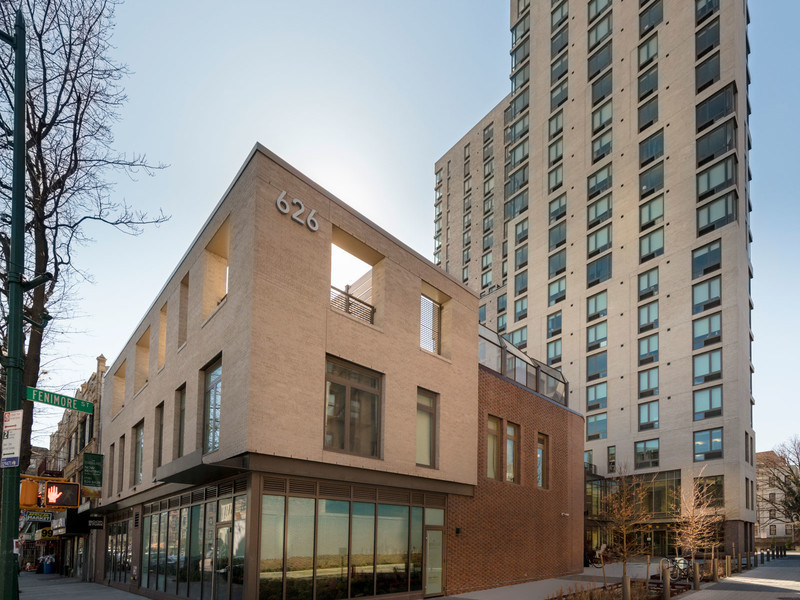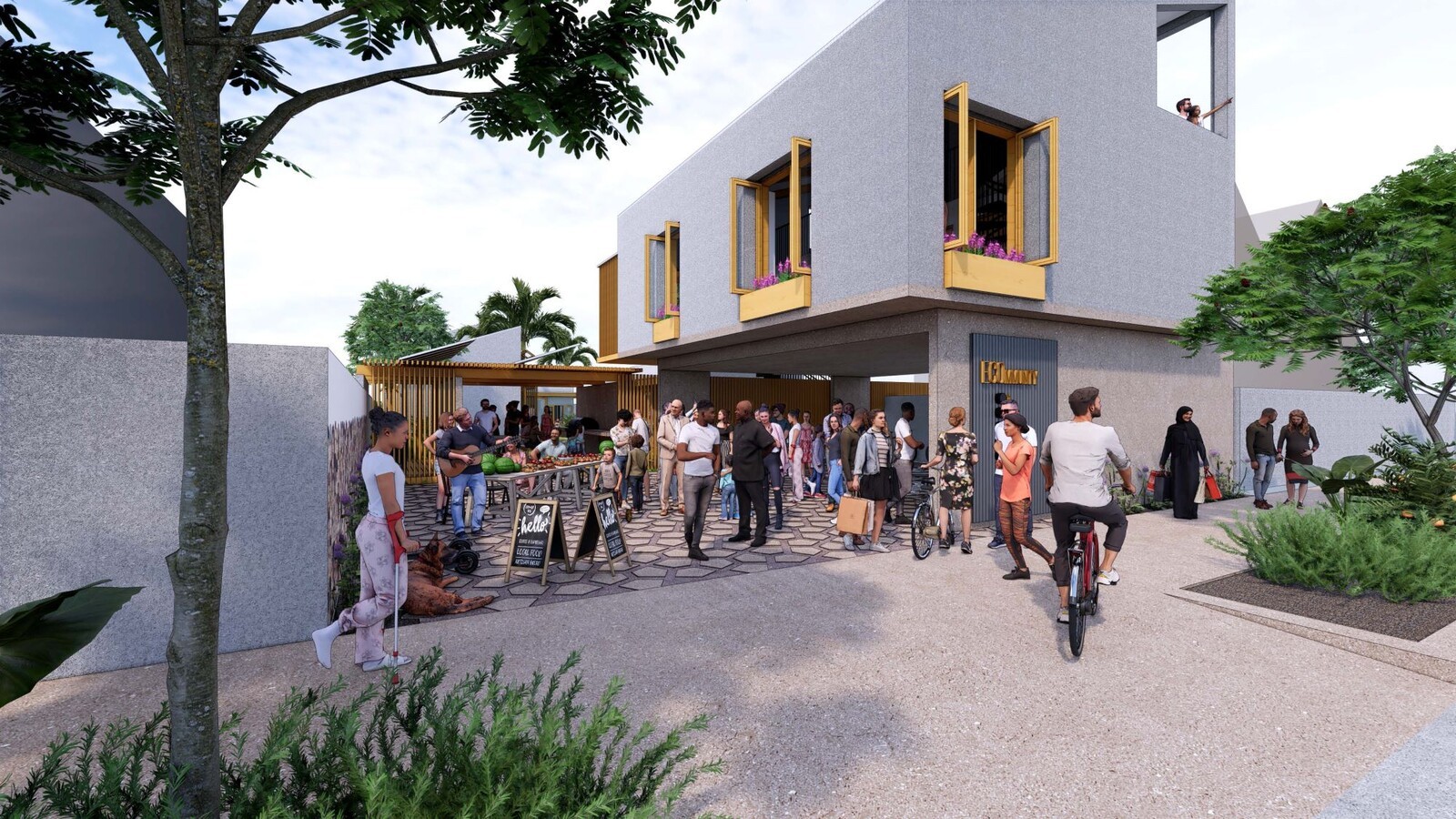
ECOMUNIDAD
This proposal addresses the contradictory considerations that affect housing in LA: How to provide density and housing opportunities without sacrificing communities or losing human scale and connection to the outdoors. It does this by striking a balance between communal spaces and private patios, between urban scale and open space, and by leaving accommodations for currently dominant vehicular transportation while anticipating a future where transportation equity and climate concerns redefine pedestrian and public transportation. The proposal acknowledges current problems and anticipates future opportunities while retaining what makes Los Angeles neighborhoods unique and treasured.
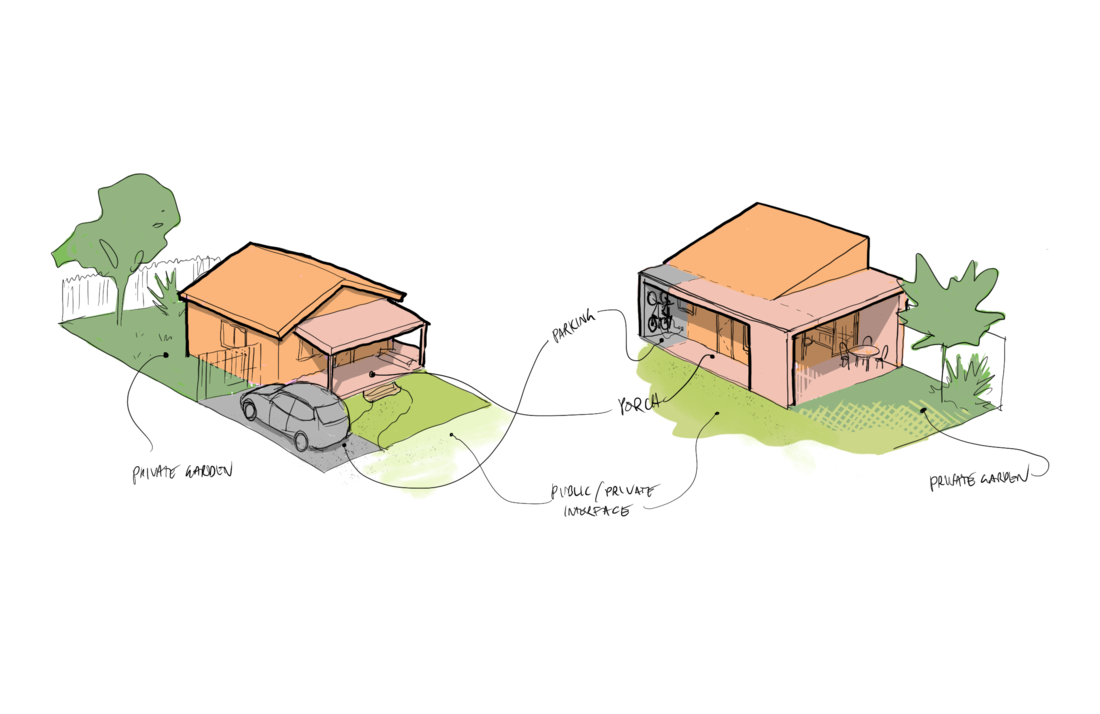
The proposed one-to-two story development, with sloped roofs & prominent porches, fits with the bungalow typology so favored by Angelenos. Porches allow for neighborly interaction and provide space for bicycles and strollers, while verandas open the living area to the garden spaces.
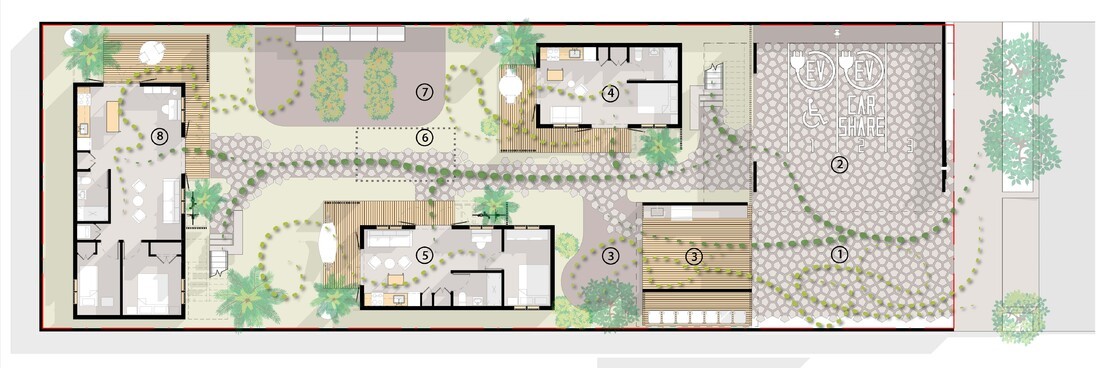
A mix of units, varying from studios to 3-bedroom, all face a central corridor that connects the residences with varied exterior areas and a communal entry court. This court is served by a multi-function room that addresses the street, links this community to the city at large, and buffers the interior courtyard to create a sanctuary within the bustle of the city.
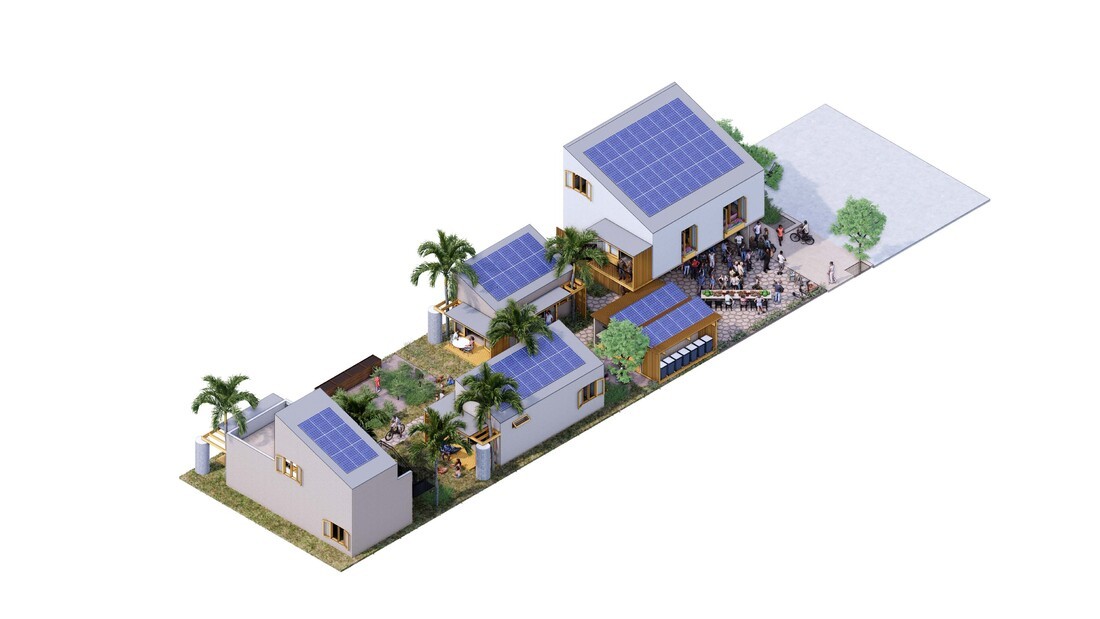
HEALTH & COMMUNITY
The project aims to improve social, mental, and physical health of the residents through several means: Robust natural ventilation and access to green areas help support a healthier lifestyle, the common orchard helps support social interactions while providing access to fresh foods, and the thoughtful use of landscaping delineates exterior areas, encouraging both communal use and private respite. It creates neighbors rather than adjacent property owners.
This project also assumes a location near public transit hubs to promote walking, biking, and other methods that are part of an active lifestyle.

FEASABILITY & TRENDSETTING
Key to promoting accessible and affordable housing is presenting solutions that can be built efficiently and quickly, but do not portray images of transitory living or of low-quality construction. Also, key is balancing current needs with new trends and demographic changes that may impact development in decades to come.

The project is comprised of simple layouts and can be constructed conventionally or with modular construction. The units can be repeated in other locations and in a variety of solar orientations, with wood porches acting as mediators between the module and its position at each location. Interior layouts allow for modifications to meet changes in user needs and/or demographics.

While achieving a density exceeding single-family bungalows, the design stays contextual to the low-rise neighborhood, both in height and footprint. Its domestic scale & seemingly casual disposition on the site avoid associations with the typical, and often-derided, institutional housing project typology.
Most importantly, this proposal strives to stimulate local economies and facilitate community building: The garden becomes a point of contact for residents and a potential link to the neighborhood, while the common building serves to both screen the residences from the street and support engagement.
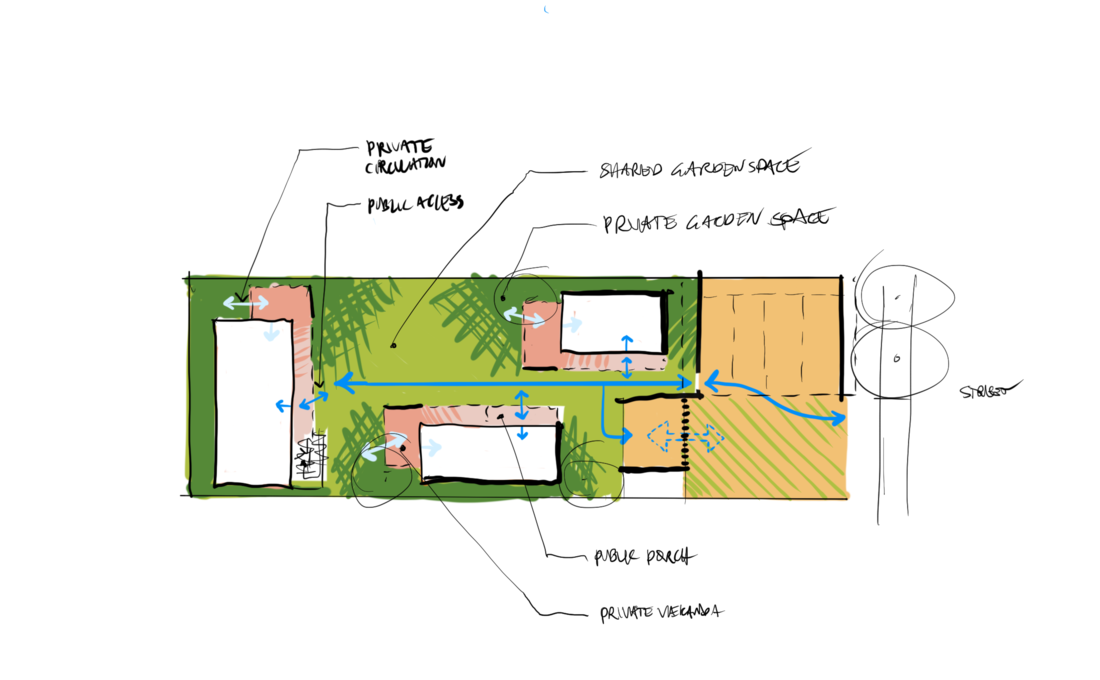
SITE AND LANDSCAPE
This proposal is based on both the bungalow court typology and the community land trust strategy. A mix of units, varying from efficiencies to 3-bedrooms, all face a central corridor that encourages community by connecting the residences with varied exterior areas and a communal entry court. Strategic landscaping creates both communal areas and private respite on the site.
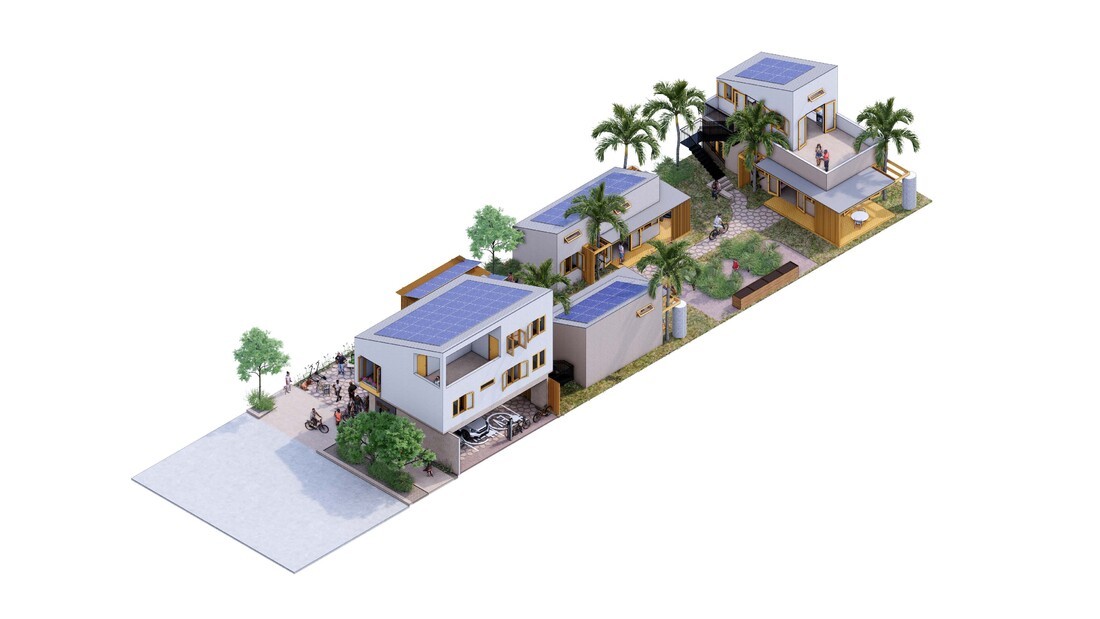
The landscaping cools oncoming breezes, provides shade, and minimizes the heat and glare reflected from the ground. It prioritizes endemic species, lessening the need for intensive maintenance and pesticides.
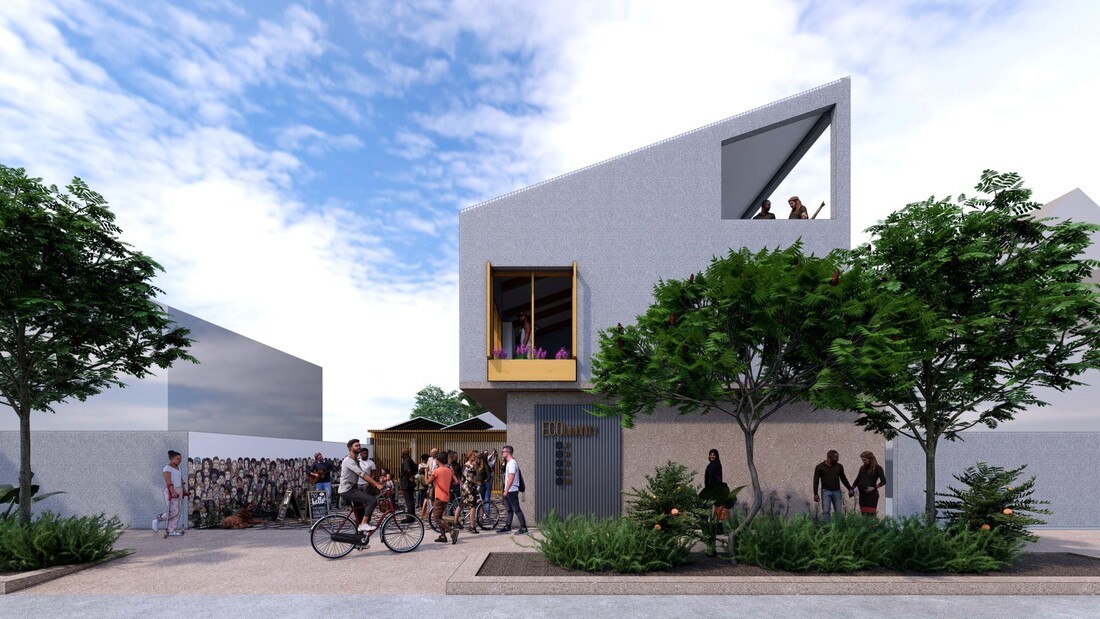
COMMUNITY
This project strives to foster connections amongst the community, providing common outdoor spaces and the opportunity for social interactions across generations, cultures and the many gaps that often separate us. It strives to create neighbors rather than adjacent property owners.

The entry court is served by a multi-function room that addresses the street and links this community to the city at large while simultaneously buffering the interior residential courtyard creating a feeling of oasis.
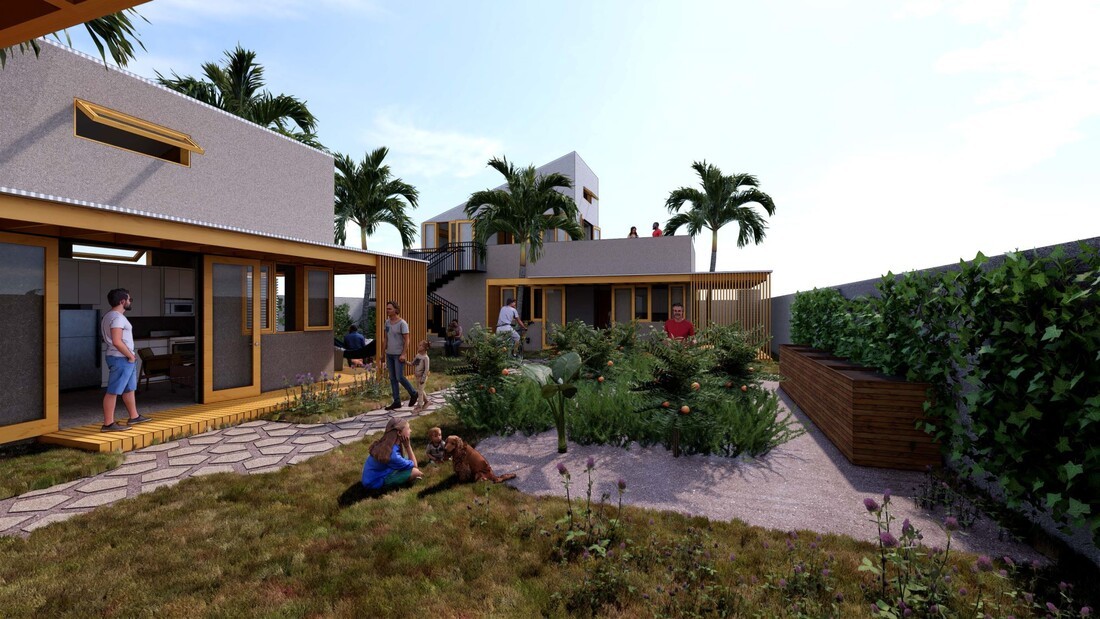
A community garden and composting area is located in the largest green space. The products from this garden can be consumed by residents or sold during a community-building event that could be held in the project’s entry court.
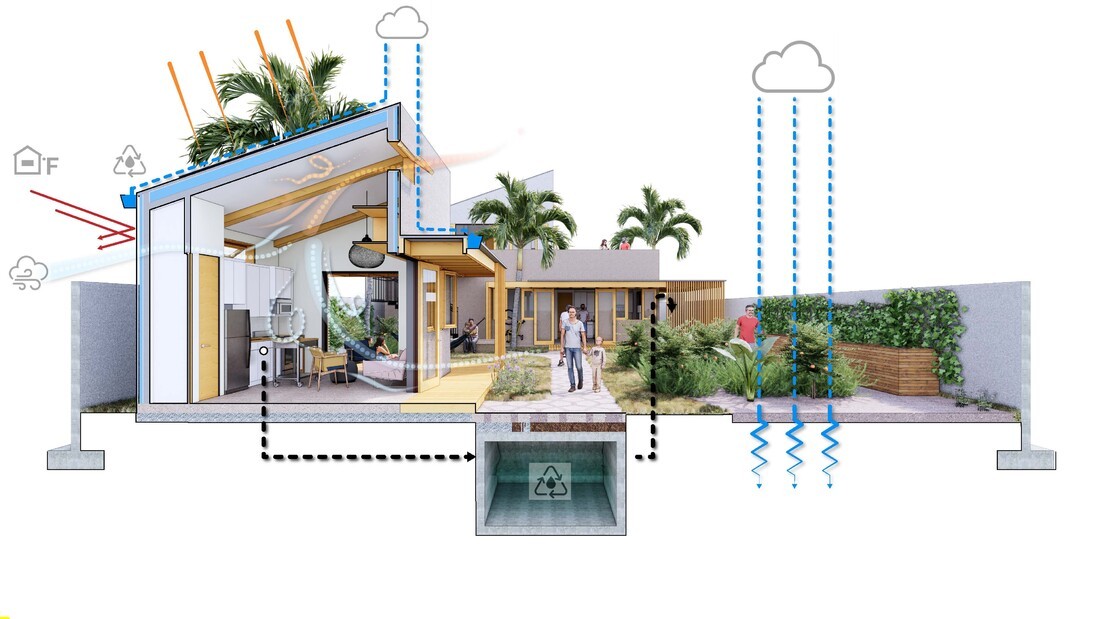
SUSTAINABILITY & CONSTRUCTABILITY
Passive strategies are maximized to conserve resources and reduce operational/maintenance costs for residents. The residences stagger across the site providing ample sun light and fresh air to each unit while creating outdoor spaces for shared and private use. The units are well insulated and have narrow footprints providing cross ventilation, reducing the need for mechanical climate control. Sloped roofs allow warm air to rise and escape, while also providing potential mezzanine or storage spaces. Light exterior wall colors reflect heat from the sun. The landscape cools oncoming breezes, provides shade, and minimizes the heat and glare reflected from the ground. It prioritizes endemic species, lessening the need for intensive maintenance and pesticides. A rain garden collects excess water for reuse and helps prevent flooding.
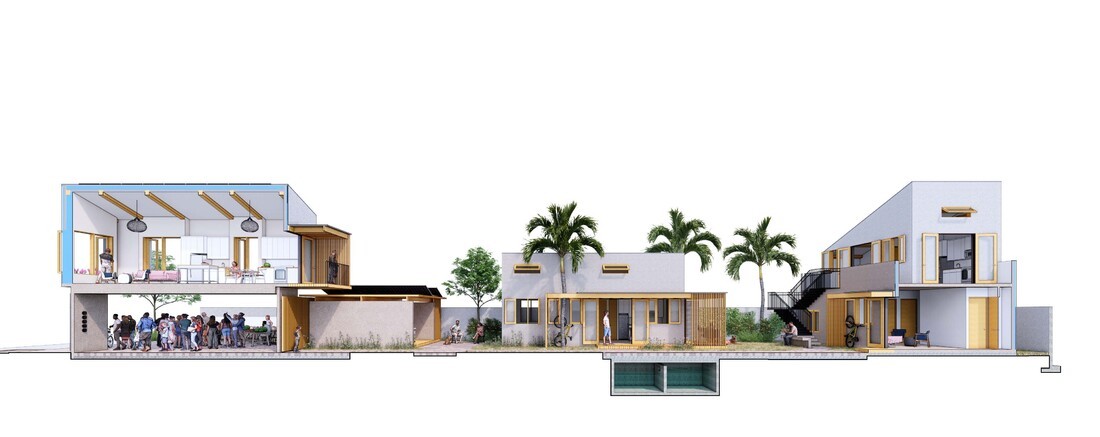
The principal active systems consist of photovoltaic arrays and a greywater collection system used for cleaning and irrigation. Appliances provided in each unit would be energy efficient working towards Los Angeles’ goal of 100% renewable energy by 2045.
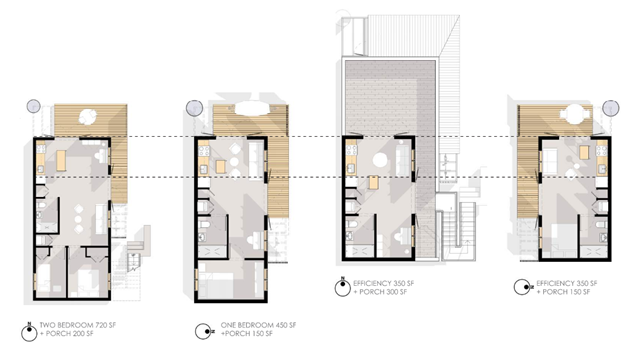
FLEXIBLE FLOOR PLANS
The proposed project is comprised of simple layouts and can be constructed conventionally or with modular construction. The units can be repeated in other locations and in a variety of solar orientations, with the wood porches acting as mediators between the module and its position at each location. The interior layouts allow for modifications to meet changes in user needs and/or demographics.
- Location
- A 50-by-150-foot midblock lot, Los Angeles, California
- Typology
- Residential, Recreational, Sustainable , Mixed-Use
- Design Team
- Jonathan Marvel, Guillermo Marrero, Enrique Ramón, Magnus Westergren, Sadie Winslow, Vernette Vélez
- Awards
- CAAPPR XVI Bienal Honorable Mention, Unbuilt 2021


